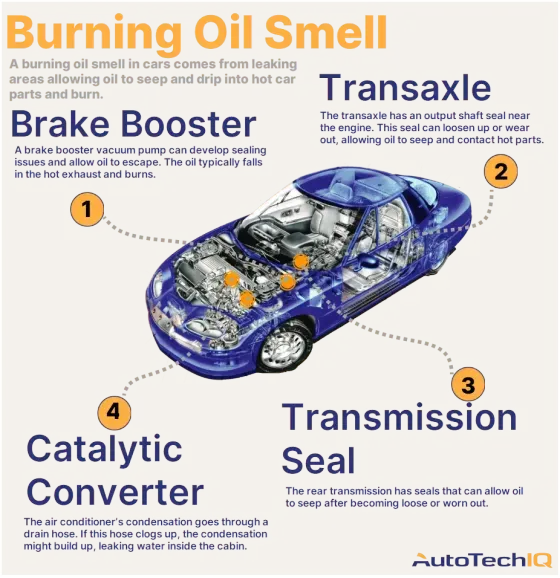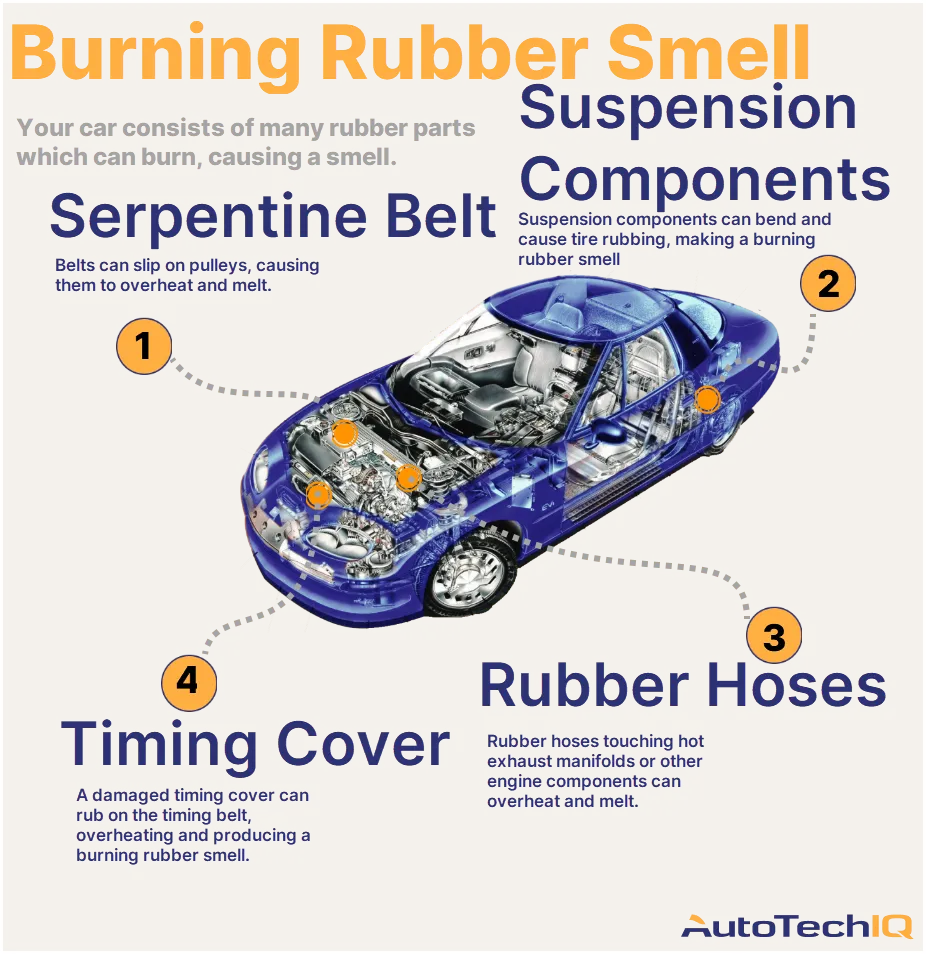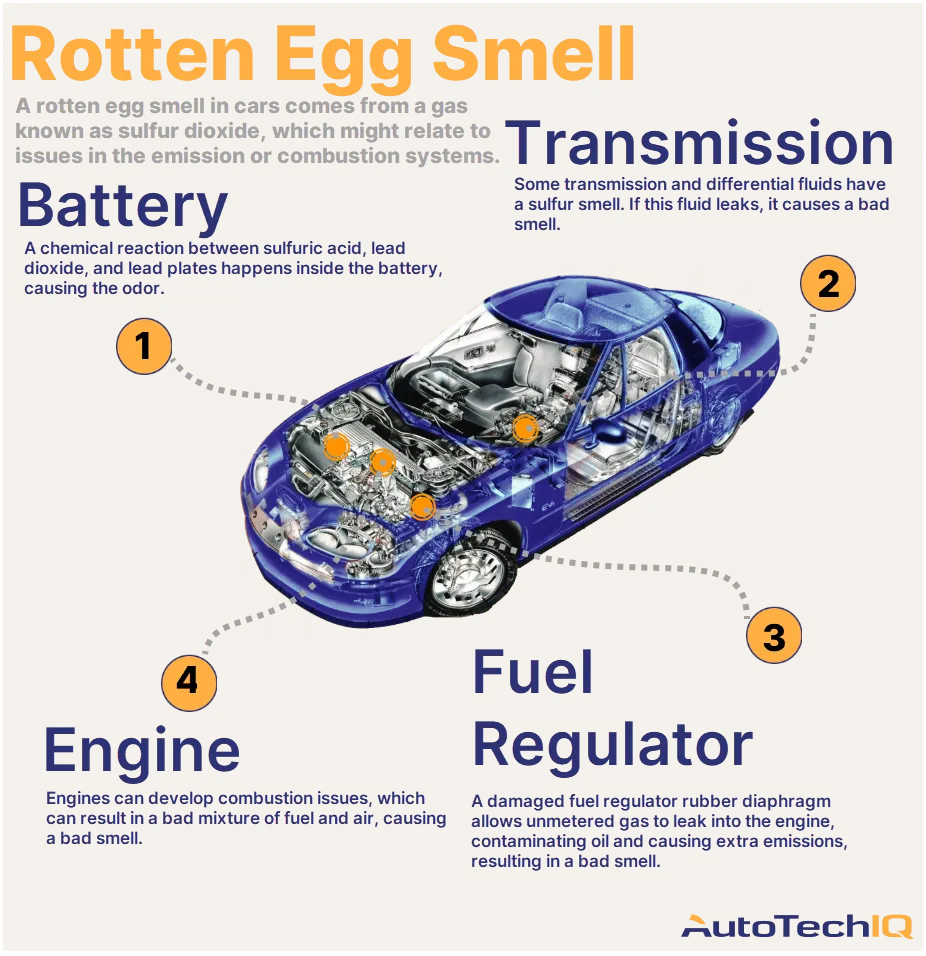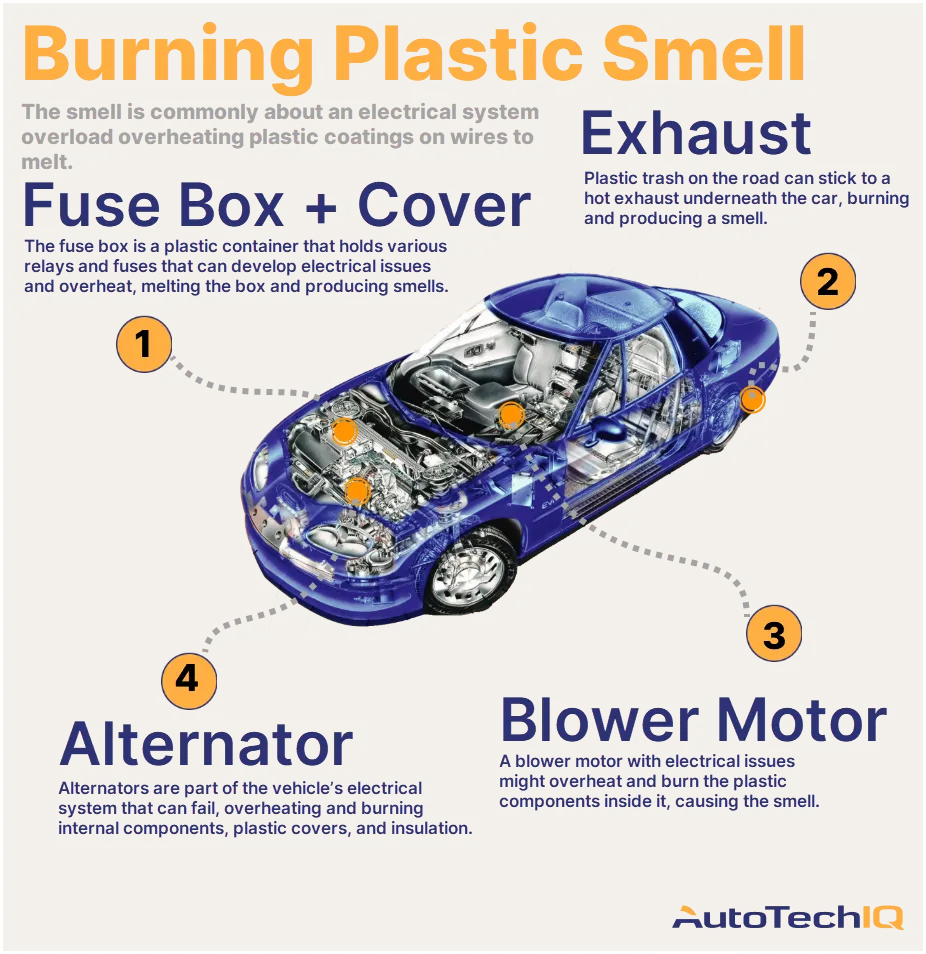
Does your Car Have a Burning Oil Smell?
The burning oil smell in cars comes from oil leaks in the engine, transaxle seal, brake booster, vacuum pump, cooler hoses, or other seals, which then come into contact with hot surfaces, like the catalytic converter.
The burning oil smell varies depending on its cause. The reason can range from oil dripping on the exhaust system to leaks in the oil filter and Engine oil pan. Moreover, sludge build-up or improper procedures from a prior service can lead to an intense burnt rubber, burnt carpet, or burning oil smell.
Watch out: A burnt oil smell can mean serious safety issues if it has been around for a long time. Imagine that all your vehicle’s systems need oil to properly function; so, if there’s a burning oil smell, there’s a leak, and you’re losing oil. This can lead to numerous failures that can leave you stranded.
A car smells like burning oil when there’s oil leaking somewhere. Here are some of the main risks:
-
Lubrication problems: Oil lubricates your vehicle’s components, making mechanical movements — gear spinning, piston movement, differential rolls — smoother. Therefore, it’s vital to keep your vehicle healthy and durable. A car with a low oil level is prone to major damage and a critical breakdown.
-
Safety Issues: A burning oil smell can mean many things. Yes, it’s mostly related to an oil leak, but it can also be a power steering fluid leak or a brake fluid leak. In these cases, you’re at risk of losing power steering and braking, which are vital for vehicle control and safety.
-
Health Concerns: The burning oil smell has toxins that can cause headaches and ill feelings if someone breathes them for too long.



